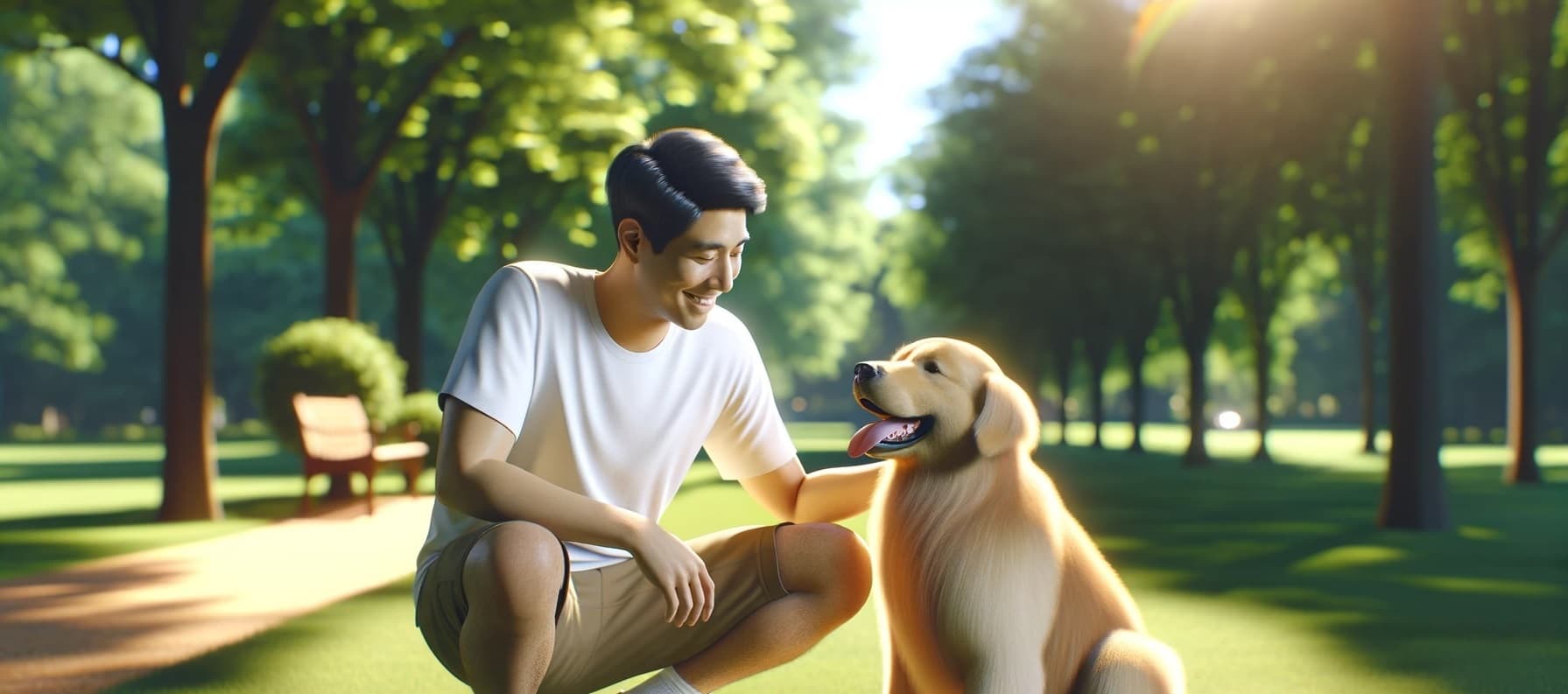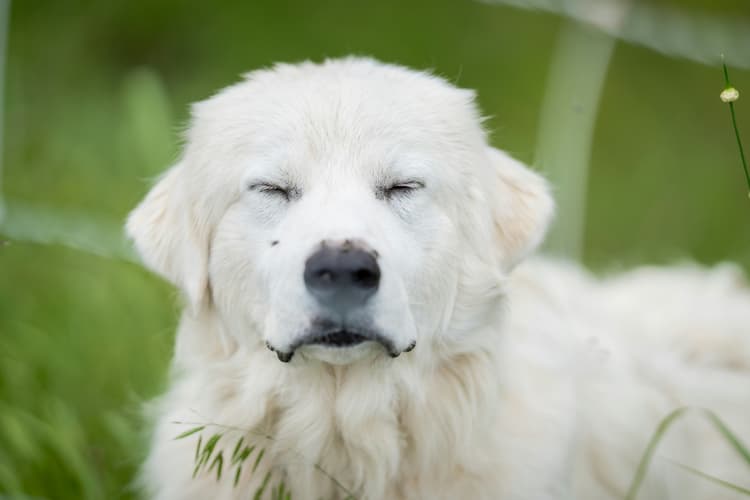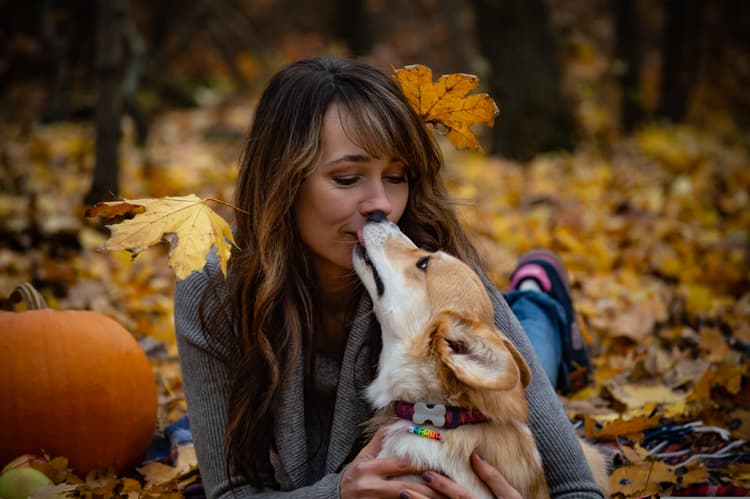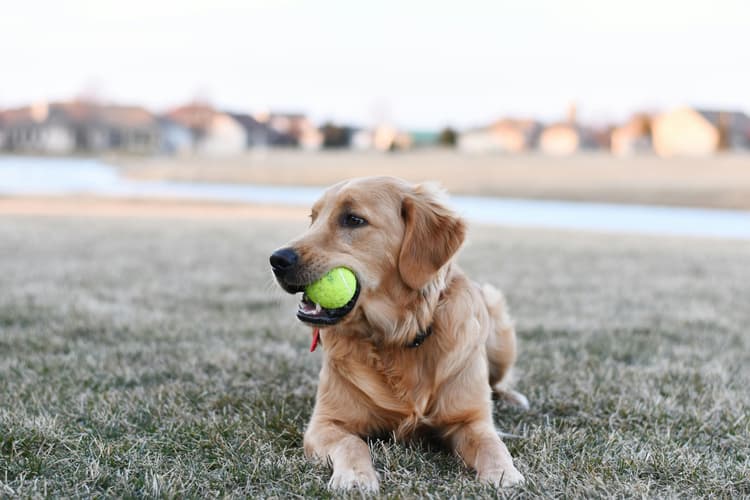When it comes to petting or interacting with a dog, first impressions matter. Dogs are highly observant animals, and their brains quickly assess humans through scent, body language, tone of voice, and—most importantly—how they are touched. A calm, respectful first-petting session can set the stage for positive future interactions, helping reduce fear, build trust, and create a lasting bond between you and the dog.
It’s also important to remember that not all dogs enjoy being petted. Some may tolerate it, while others genuinely dislike being touched. This makes it essential to approach every dog as an individual, paying attention to their comfort level before reaching out.
In this guide, you’ll learn the right way to pet a dog: how to recognize the signs that a dog is open to touch, the best areas to pet, the types of strokes most dogs prefer, and the signals that tell you when it’s time to stop. We’ll also explore the questions many dog owners wonder: How to pet a dog? Do dogs actually like being petted?

Why Do Dogs Like to Be Petted?
Most dogs enjoy being petted because it offers both emotional and physical comfort. As highly social animals, gentle touch can trigger the release of oxytocin—the “love hormone”—which helps reduce stress and strengthens the bond between dogs and their humans.
Petting a dog also provides reassurance, reminding them of the grooming, licking, and cuddling they experienced from their mother and littermates as puppies. In addition, it can feel physically good: dogs appreciate having help reaching itchy or tense areas they can’t easily scratch themselves, and many find the pressure of a gentle massage relaxing.
Centuries of domestication have also shaped dogs to be especially receptive to human touch, setting them apart from wolves and other wild canines. While wolves may tolerate limited handling in rare cases, dogs actively seek out contact, showing just how deeply touch is woven into their relationship with people.
How to Pet a Dog Properly?

Step 1: Ask for Permission From the Owner
Always ask the pet parent first.
Before reaching out and petting dog, always ask the owner if it’s okay. Some dogs may be shy, nervous, recovering from an injury, or simply not comfortable with strangers. Respecting this boundary keeps both you and the dog safe.
Respect working dogs.
It’s especially important to avoid petting working dogs. Service dogs, therapy dogs, and dogs assisting law enforcement or airport staff are “on duty.” Interacting with them can distract them from their tasks, put people at risk, or interfere with their training. In fact, in some places, touching or distracting a service dog without permission is against the law.
Step 2: Let the Dog Approach You First
Once you have the owner’s approval, let the dog decide whether they want to interact. Dogs feel safer when they can approach at their own pace rather than having a stranger enter their space.
Stand calmly with relaxed body language, and avoid looming over the dog or leaning into their face. A sideways stance is less intimidating than standing squarely in front of them. For smaller dogs, crouch down slowly and offer the back of your hand for them to sniff. This gesture shows that you’re non-threatening and gives the dog the choice to engage—or walk away if they prefer.
Step 3: Start Slow and Read Body Language
Always let the dog’s body language guide you when answering the question, “Where do dogs like being petted?” Dogs communicate primarily through posture, facial expressions, and movement. Recognizing these signals helps you avoid overwhelming them and ensures the interaction is positive for both of you.
Signs of discomfort may include a stiff body, crouching, lip-licking (not related to food), yawning, pinned-back ears, a tucked tail, or a low growl. These indicate that the dog feels anxious or threatened, and it’s best to stop and give them space.
In contrast, a dog that is relaxed and happy to be petted will show loose, wiggly movements, a soft or “smiling” expression, relaxed ears, gentle eye contact, and a tail wagging in a natural, easy rhythm.
Category | Positive / Content Signs | Negative / Discomfort Signs |
Eyes | Soft, relaxed, gentle blinking | “Whale eyes” (whites showing), intense stare, or avoiding eye contact |
Ears | Neutral or slightly forward | Pulled back tightly, pinned flat against the head, or shifting to the side |
Mouth | Loose lips, slightly open mouth, relaxed panting | Lip-licking (without food), tight lips, corners pulled back, closed stiff mouth |
Tail | Relaxed, wagging loosely at mid-height | Tucked under the body, stiff, or rapid high wagging (often a sign of tension, not friendliness) |
Body Posture | Relaxed muscles, leaning into touch | Crouching, stiff stance, weight shifted backward, tense muscles |
Facial Expression | Relaxed brows, neutral expression | Furrowed brows, tense or wrinkled face |
Movement | Approaches you, stays nearby, nudges for petting | Turns away, backs up, moves out of reach |
Other | Calmly rolling over, exposing belly for petting (rare genuine invitation) | Stiff “submissive” belly exposure—often a sign of appeasement, not an invitation to touch |
Step 4: Use the “Pet, Pet, Pause” Method
One effective way to pet a dog is by using the consent test, often called the “pet, pet, pause” method. Begin with just a few gentle strokes—ideally on the dog’s shoulders, chest, or side, rather than reaching over the head. After two or three strokes, pause and let the dog decide what happens next.
If the dog wants more: They may lean in, nudge your hand, paw at you, or stay close. These are clear signals that they’re enjoying the interaction.
If the dog wants space: They may step back, turn their head away, avoid eye contact, or walk off. This means they’d prefer to stop, and it’s important to respect that choice.
This simple pause-and-check approach ensures the dog feels comfortable, respected, and safe. It also builds trust, because the dog learns that you listen to their signals rather than forcing unwanted contact.
Tip: Some dogs enjoy short bursts of petting more than long sessions. Using the “pet, pet, pause” method helps you match your touch to the dog’s comfort level.
Where Do Dogs Like to Be Pet?

Where to pet dogs? Certain areas of a dog’s body are more enjoyable to touch than others, but every dog is unique. Preferences can vary not only from dog to dog but also depending on the situation—for example, a shoulder rub after a long walk or a chin scratch while resting. Always pay attention to the dog’s body language to see if they’re comfortable.
Favorite Petting Spots:
Behind the ears – A comforting and soothing area for many dogs.
Under the chin – Gentle scratches here often feel calming and safe.
On the chest – A grounding spot that most dogs accept easily.
Along the shoulders – Especially enjoyable after play or exercise.
Sides of the neck or thighs – Relaxing areas that dogs usually tolerate well.
Belly – A favorite for some dogs, but only if they invite it. A dog exposing their belly isn’t always asking for rubs—it can also be a sign of submission or trust-testing. Only give belly rubs if the dog looks relaxed, wiggly, and clearly wants the contact.
Special Note: The top of the head is a hit-or-miss spot. Some dogs enjoy it, while others find it intimidating or even threatening, especially if the hand comes down suddenly from above. Watch carefully for signs of tension, such as stiffening, lip-licking, or leaning away, and stop if the dog seems uncomfortable.
Tip: Always start petting in neutral, less-threatening areas (like the chest or shoulders) before moving to more sensitive spots.
Areas to Avoid Petting
Just as there are spots most dogs love, there are also areas that should generally be avoided—especially when petting a dog for the first time. Touching these places can cause discomfort, stress, or even provoke a defensive reaction.
Areas to Avoid (or Approach With Caution):
Paws – Many dogs dislike having their feet touched unless they’ve been specifically trained to tolerate it.
Tail – Pulling, patting, or grabbing the tail can be painful and startling.
Ears – While some dogs enjoy gentle ear rubs, ears are highly sensitive to touch and sound. Tugging, poking, or sudden handling can cause discomfort.
Face and lips – Reaching toward a dog’s mouth, nose, or eyes can make them feel threatened or cornered.
Sensitive or painful areas – Avoid touching places that may hurt, especially in senior dogs or those with arthritis, hip issues, or recent injuries.
Belly – A belly-up position doesn’t always mean “rub my belly.” Often, it’s a sign of submission or appeasement. Only give belly rubs if the dog looks loose, wiggly, and clearly invites contact.
Context sensitivity – Senior dogs, rescues, or dogs with past trauma may have unique sensitivities. Always read their body language before attempting touch.
Special Note on Children: Kids often reach for dogs’ faces, ears, or paws—areas that are most likely to trigger discomfort. Teach children to pet dogs gently on the back, chest, or shoulders instead, and always supervise interactions.
Where (and How) to Pet a Dog to Relax Them
Petting can be more than just affection—it can also be a way to help a dog unwind. The right touch, combined with calm energy, can reduce stress and make a dog feel safe and cared for.
Best Techniques for Relaxation:
Chest and chin: Use gentle, long strokes in these areas. Most dogs find them calming and grounding.
Back and shoulders: Apply slow, steady strokes, almost like a massage. Dogs often enjoy this after exercise or when they have an itch they can’t quite reach.
Head (with caution): Some dogs tolerate gentle strokes on the head, but avoid heavy patting, which can feel jarring. Light scratches between the ears or on the forehead can be soothing if the dog is comfortable.
Behind the ears and along the neck: Slow rubs here mimic natural grooming behaviors among dogs, helping release tension.
Let the dog guide you: If the dog leans in, shifts position, or nudges your hand, follow their lead—they’re telling you where they want more attention.
Extra Tip: Combine touch with sound. While petting, speak in a calm, gentle voice. Low-toned, soothing words paired with relaxed strokes can enhance the calming effect and strengthen the bond.
Conclusion - Key Takeaways
We hope this guide helps answer the question, “How to pet a dog?”
The most important principle is respecting the dog’s boundaries. Always make sure a dog is comfortable with being touched before reaching out. Never pet guide dogs or service dogs, as this can distract them from their important work.
Take things slow, and let the dog decide how much interaction they want. If you’re unsure, it’s better to skip the petting than risk making the dog uncomfortable. A calm, respectful first encounter can pave the way for a lasting friendship and help the dog learn to trust you.
Frequently Asked Questions
Do dogs like being pet?
Yes! Many well-socialized dogs enjoy being petted. Gentle touch triggers the release of oxytocin, the “love hormone,” which creates pleasure and strengthens the bond with humans.
Why do dogs like being pet?
Petting helps dogs release stress, feel comforted, and bond with their human companions. Many dogs also enjoy having areas scratched that they cannot reach themselves, such as the back, shoulders, or base of the neck.








